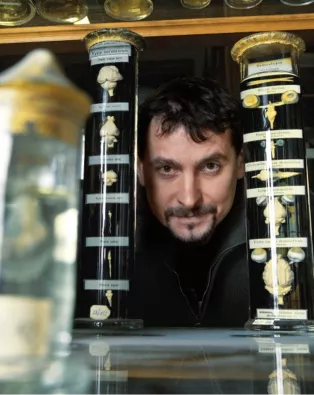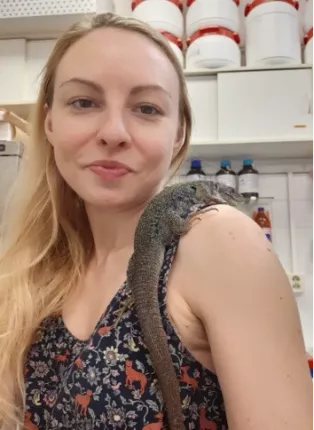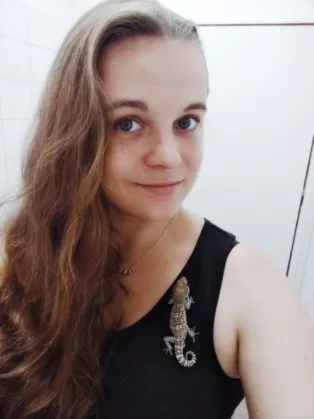Team - Comparative Neuroanatomy
Pavel Němec, PI
Kristina Kverková, PhD
Alexandra Polonyiová, PhD Student
Patrik Stehlík, PhD Student
Pavel Němec, PI
Charles University
pavel [dot] nemec [at] natur [dot] cuni [dot] cz
I am a comparative neuroanatomist and sensory biologist. The major mission of my lab is to use modern neuroscience tools to study the evolution of vertebrate brains in quantitative terms. We seek to combine the isotropic fractionator that allows estimation of neuronal and glial cell numbers and distributions across hundreds of species with whole-brain labeling, clearing and automated light microscopy methods that allow quantitative whole-brain mapping of cell type distributions. Our ultimate goal is to assess how evolutionary diversification or convergence in brain quantitative features contributes to the broad behavioral repertoires seen across vertebrates.
Kristina Kverková, PhD
Charles University
kristina [dot] kverkova [at] gmail [dot] com
I am a member of the neuroanatomy team led by Pavel Němec. I study vertebrate brain evolution and I have a particular interest in non-avian reptiles and amphibians, as they are largely understudied but can give us important clues about the evolutionary changes that shaped the brains of birds and mammals.
Alexandra Polonyiová, PhD student
Charles University
alexpolonyiova [at] seznam [dot] cz
I am a PhD student in zoology at Charles University and I focus on evolution of brain complexity and processing capacity in different vertebrate lineages. Using the isotropic fractionator, we estimate number of neurons and glial cells in whole brains and parts thereof. Number of neurons, which is used as a proxy for the information processing capacity of the brain, can help us better understand the evolution of brain.
Patrik Stehlík, PhD student
Charles University, Department of Zoology, Division of Animal Evolutionary Biology
stehlikpa [at] natur [dot] cuni [dot] cz
I am a member of the Sensory and Evolutionary Neurobiology research group led by Pavel Němec. I study the evolution of vertebrate brains with particular interests in the number of neurons in the bird brain. Although the numbers of neurons can vary strikingly between different groups of avians studied so far, current sampling does not allow us to reconstruct the evolution of brain complexity and processing capacity in birds. Only a broader phylogeny sampling may deepen our understanding of brain evolution and related processes, and not only in birds.





